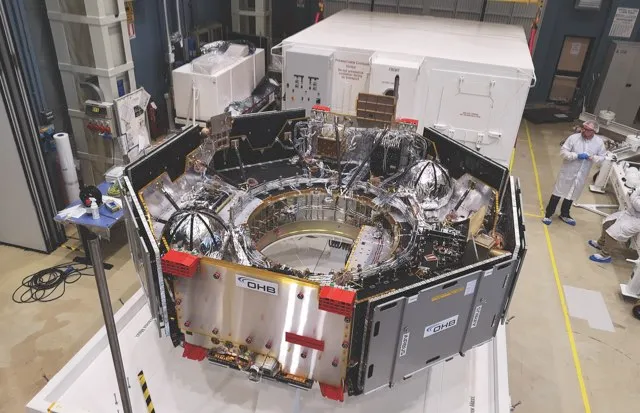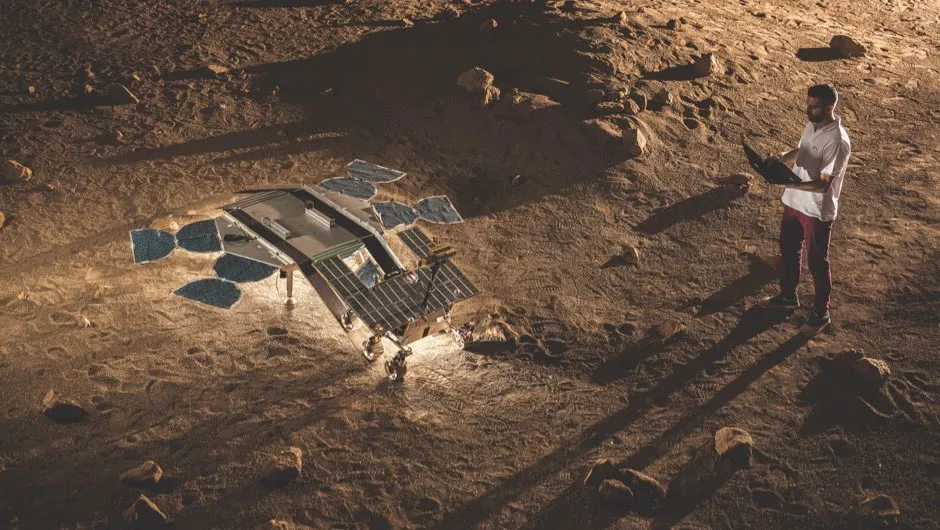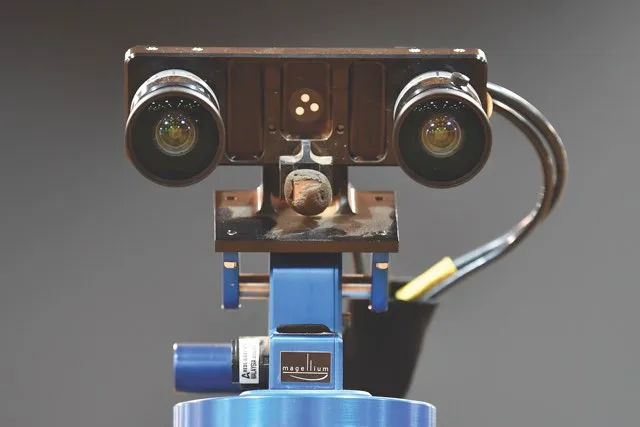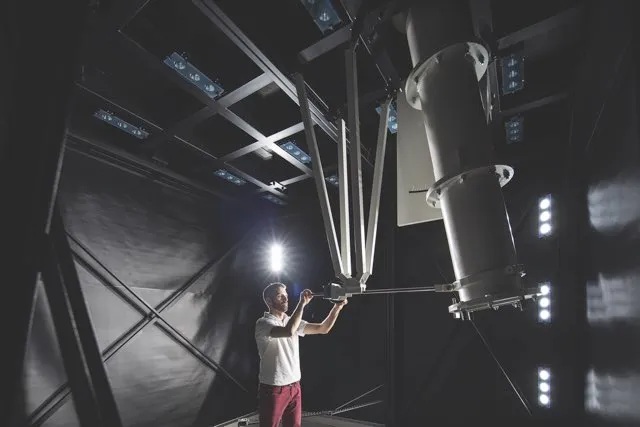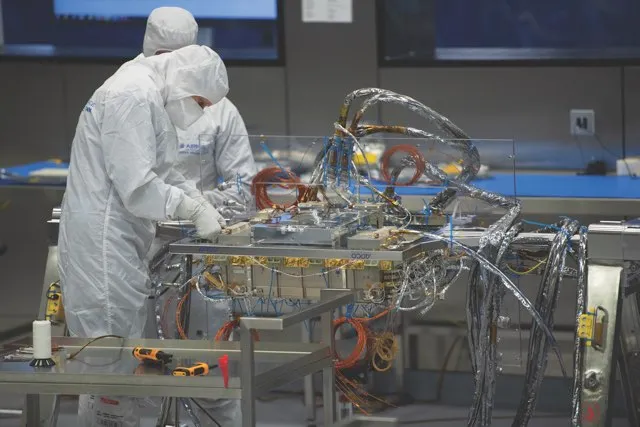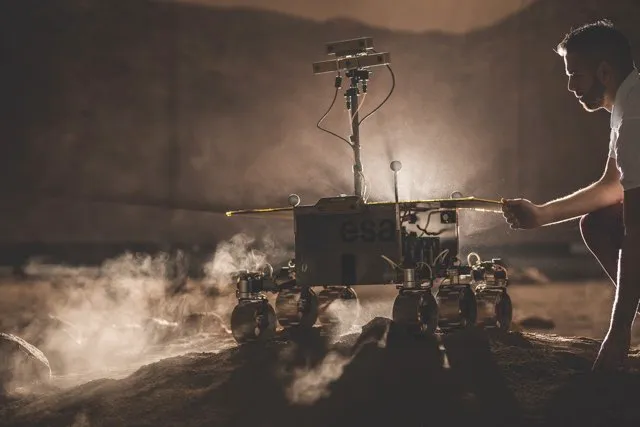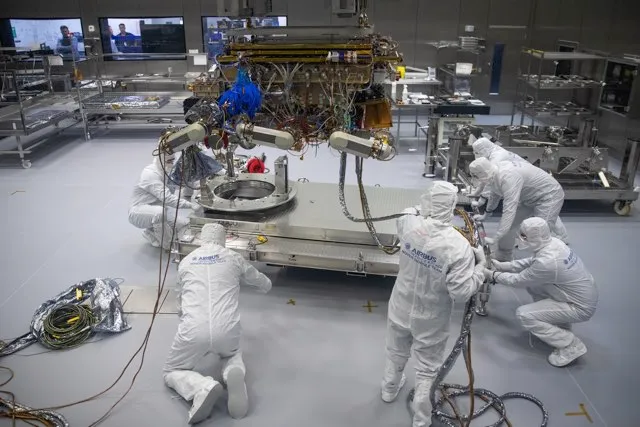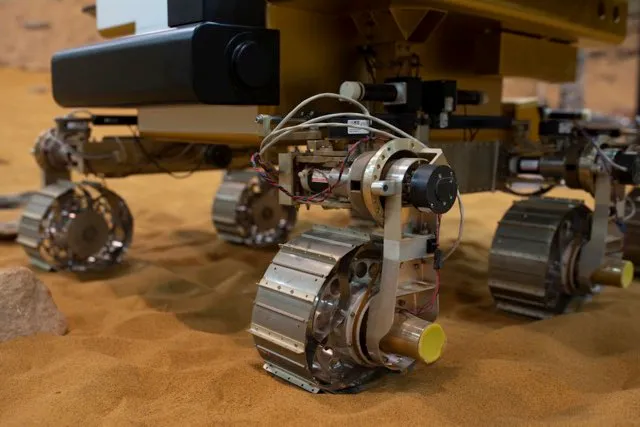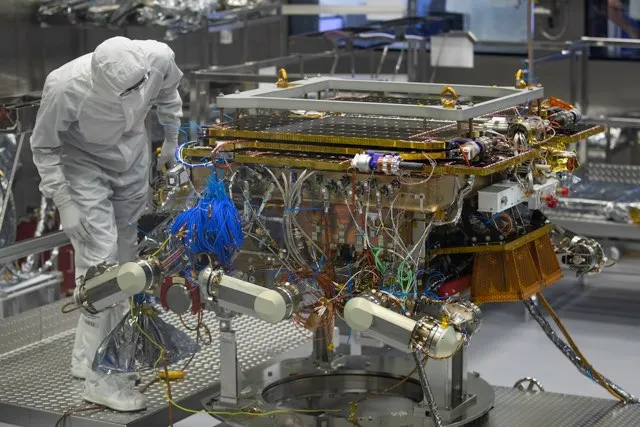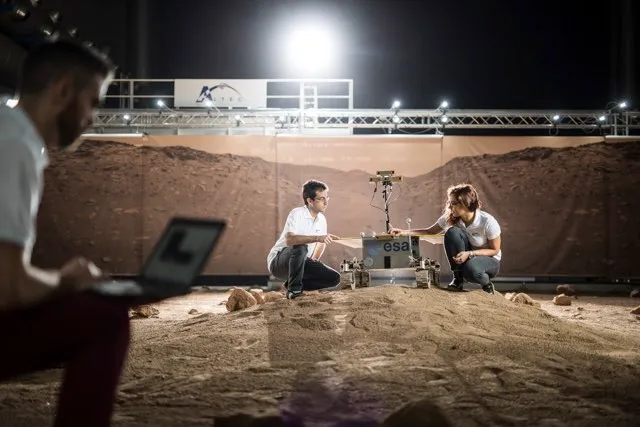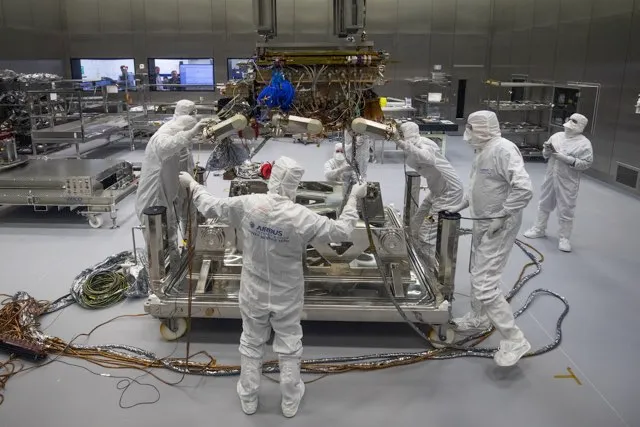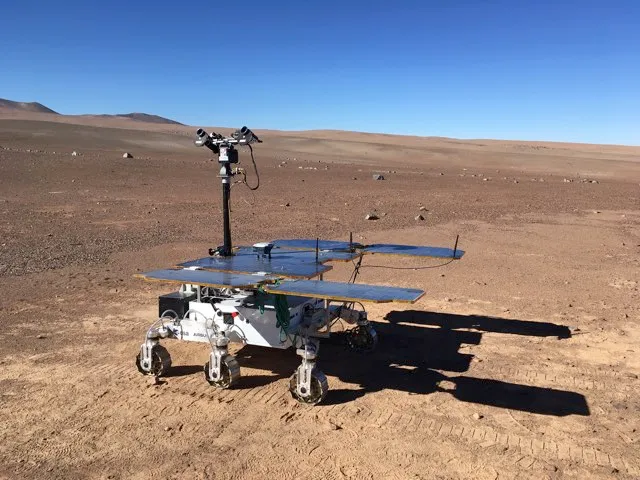The assembly of the ExoMars rover is now complete ahead of its proposed blast-off date next year.
However, the European Space Agency’s (ESA) ExoMars mission to the Red Planet could hang in the balance, as successful tests on the rover’s parachutes are yet to be conducted.
The Rosalind Franklin rover’s supersonic parachutes will be put through their paces in the US state of Oregon in November, but if sufficient progress is not demonstrated, the July 2020 launch date could be in jeopardy.
Pietro Baglioni, the ESA’s ExoMars manager, explained that two tests earlier this year revealed problems of a similar nature, related primarily to the packaging and extraction system of the parachute.
He added that there is an understanding of what the issues are and measures are being implemented to address them.
Read more about the search for life on Mars:
- The next great search for life on Mars
- Signs of ancient flowing water found on Mars
- Mars may have enough oxygen to support subterranean life
- InSight: what NASA's mission to Mars could find inside the Red Planet
Mr Baglioni said: “November has to work, or at least give the indication the measures implemented are successful.”
Asked what the rover would be looking for, he told the PA news agency: “We go to Mars because it is the first step of the exploration of the Solar System that we want to achieve in the next decades.
“We go to Mars to find signs of past life, and possibly also of present life.
“And to do that we will take samples with our rover on the subsurface, because on the subsurface scientists believe there are more possibilities to find signs of life.”
He continued: “We hope to find evidence of presence of water, which is already clear from other investigations that have been done from missions to Mars so far.
“And then signs of possible microorganisms, or things that have been related to the presence of water that can bring us to the concept of possible past life on Mars.
“It has to do with understanding of the evolution of the planet, to understand that a planet like Mars could have been similar to ours.”
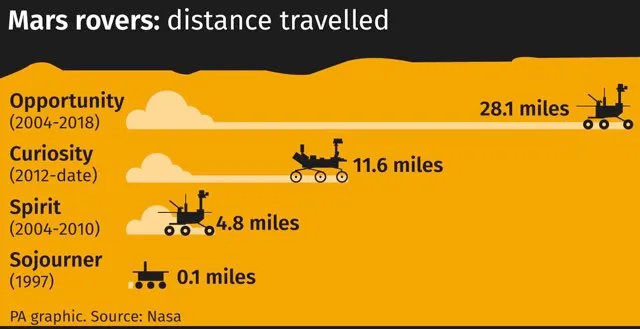
Named after the British DNA pioneer Franklin, the six-wheeled robot will search for life on Mars. It is equipped with a two-metre drill to take samples from below the surface where they will have been protected from the harsh radiation environment.
Europe’s first planetary rover was assembled at Airbus in Stevenage.
The vehicle features nine instruments which will help scientists conduct a step-by-step exploration of the Red Planet, from a panoramic scale and progressively converging to smaller (sub-millimetre) studies, concluding with the molecular identification of organic compounds.
The rover is also equipped with an autonomous navigation system, developed by Airbus, which will enable it to travel between sites of interest much more quickly than by being driven remotely in real time from Earth.
Last week the rover said goodbye to Stevenage and travelled to Airbus Toulouse for testing.
It will then make its way to Thales Alenia Space In Cannes, before its launch from Baikonur in Kazakhstan, scheduled for July 2020.
The Rosalind Franklin is due to land on Mars on 19 March 2021 after a nine-month trip.

ExoMars is a European Space Agency programme in cooperation with the Russian space agency Roscosmos and the contribution of NASA.
The project, which started in 2005, has waited a long time for completion, facing a number of obstacles along the way.
These have included issues relating to funding and politics.
Mr Baglioni said that one obstacle was a number of European contributors wanting to be part of the mission.
He added: “It is such a challenging and fantastic mission that everybody was willing to participate and to offer instruments.
“And then there was funding as well, because the mission was very expensive – going to Mars is not something easy.”
Listen to ESA Senior Science Advisor Mark McCaughrean explains how to get a space mission off the ground
Van Odedra, Airbus ExoMars rover project manager, told PA: “There were times, I have to admit, where because of the funding constraints on the programme we were not able to move at the sort of pace that we wanted in order to progress the development, so we had to manage that.
“We had to manage the selection and awarding of contracts to suppliers based on the available funding.
“So that all changed when we got the full green light from the ESA board to go ahead with the build of the rover (in 2013-2014).
“I am really really pleased that we have got to this milestone.
“But of course, this is just another big step of the journey to get to Mars. We will have a big sigh of relief when the rover is able to get off the platform, drive down along the ramps and get on to start its mission, so that we can test and prove that all of the elements that have gone into building this rover are functioning as we designed.”
Follow Science Focus onTwitter,Facebook, Instagramand Flipboard
